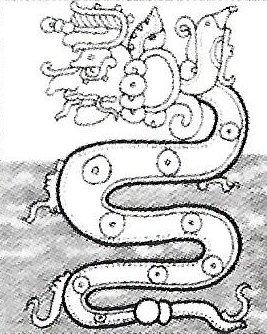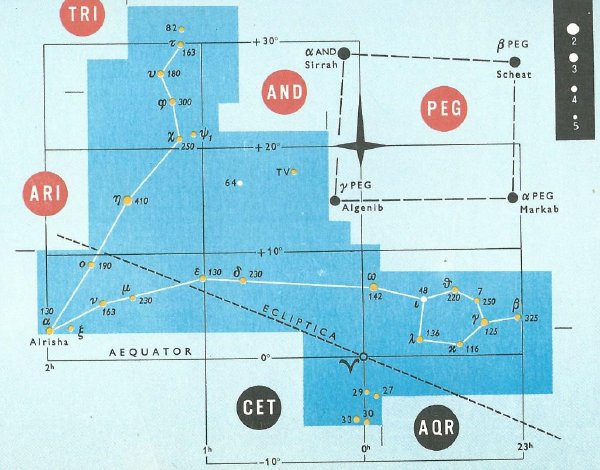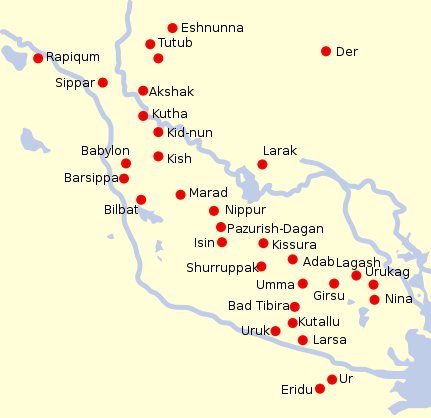|
RIGEL
We should now integrate the new information:
Into my overall table of view:
I have assumed the C text was created from the perspective on Easter Island, where the stars at the Full Moon would ideally be observed to be 366 / 2 = 183 days away from the Sun dates according to the nakshatra method and the Gregorian calendar. I.e. in September 21 (264) the Sun should arrive to the place 183 days after heliacal Algenib Pegasi in March 22. And this place (*184) should ideally be observed from the Full Moon when she was arriving to the right ascension line *184 in March 22. Translated into the Era of Bharani (*41) the Sun would at that ancient time have arrived 41 days later to the current place for heliacal Algenib Pegasi (*1). March 22 (81) + 41 = 122 ("May 2). And therefore the corresponding place for the Full Moon would have been September 21 (264) + 41 = 305 ("Nov 1). This was due to the precession of the Sun, which over the millenia pushed the cardinal points of the Sun earlier and earlier among the fixed stars.
On the other hand, as counted from the position of the stars they would appear to arrive later and later in the year of a Sun calendar. Returning back in time: *184 (September 21, 264) - *41 = *143 (223, "August 11) ↔ *143 - *183 + *41 = *1 (Algenib Pegasi). With a minor adjustment from 183 to 185 in order to compensate for the elliptic orbit of planet Earth around the Sun we could have reached the day for the creation of our present world (225). "August 13 (225, *145) - *185 + *41 = *1 (Algenib Pegasi). The day for the creation of our world should not move in the sun calendar. Just like Sirius (*101), currently positioned 45 days after the Pleiades and likewise 45 days before the Mayan date 5 Imix 9 Kumk'u.
... The Sothic cycle was based on what is referred to in technical jargon as 'the periodic return of the heliacal rising of Sirius', which is the first appearance of this star after a seasonal absence, rising at dawn just ahead of the sun in the eastern portion of the sky. In the case of Sirius the interval between one such rising and the next amounts to exactly 365.25 days - a mathematically harmonious figure, uncomplicated by further decimal points, which is just twelve minutes longer than the duration of the solar year ...
Ca9-9 (→ 9 * 9 = 81 → *81 → Algenib Pegasi) was designed, I think, to illustrate a break (koti) in the normal flow of Sun light.
From ko-ia to koti-a there were 8 lunar synodic months (8 * 29˝ = 236), Metoro said to Bishop Jaussen on Tahiti. ... I'a is the general name for fishes,' Pratt notes in his Samoan dictionary, 'except the bonito and shellfish (mollusca and crustacea).' ... Koti. Kotikoti. To cut with scissors (since this is an old word and scissors do not seem to have existed, it must mean something of the kind). Vanaga. Kotikoti. To tear; kokoti, to cut, to chop, to hew, to cleave, to assassinate, to amputate, to scar, to notch, to carve, to use a knife, to cut off, to lop, to gash, to mow, to saw; kokotiga kore, indivisible; kokotihaga, cutting, gash furrow. P Pau.: koti, to chop. Mgv.: kotikoti, to cut, to cut into bands or slices; kokoti, to cut, to saw; akakotikoti, a ray, a streak, a stripe, to make bars. Mq.: koti, oti, to cut, to divide. Ta.: oóti, to cut, to carve; otióti, to cut fine. Churchill. Pau.: Koti, to gush, to spout. Ta.: oti, to rebound, to fall back. Kotika, cape, headland. Ta.: otiá, boundary, limit. Churchill. Ti. 1. Liliacea (Cordyline fruticosa); its long, thick root, cooked in the earth oven, is deliciously sweet. 2. To bend down to allow someone to climb on one's back to be carried (haha); he-ti-atu a Kaiga i te tua ivi, he-haha-mai Huri Avai, Kaiga bent his back and Huri Avai climbed on his shoulders. Vanaga. 1. Dracćna. P Mgv., Mq., Ta.: ti, id. 2. Tea. Churchill. *95 (Canopus ↔ Agastya) - *41 = *54 → "April 3 (Ca9-9).
|
||||||||||||||||||||||||||||||||||||||||||||||||||||||||||||||||||||||||||||||||||||||||||||||||||||||||||||||||||||||||||||||||||||||










